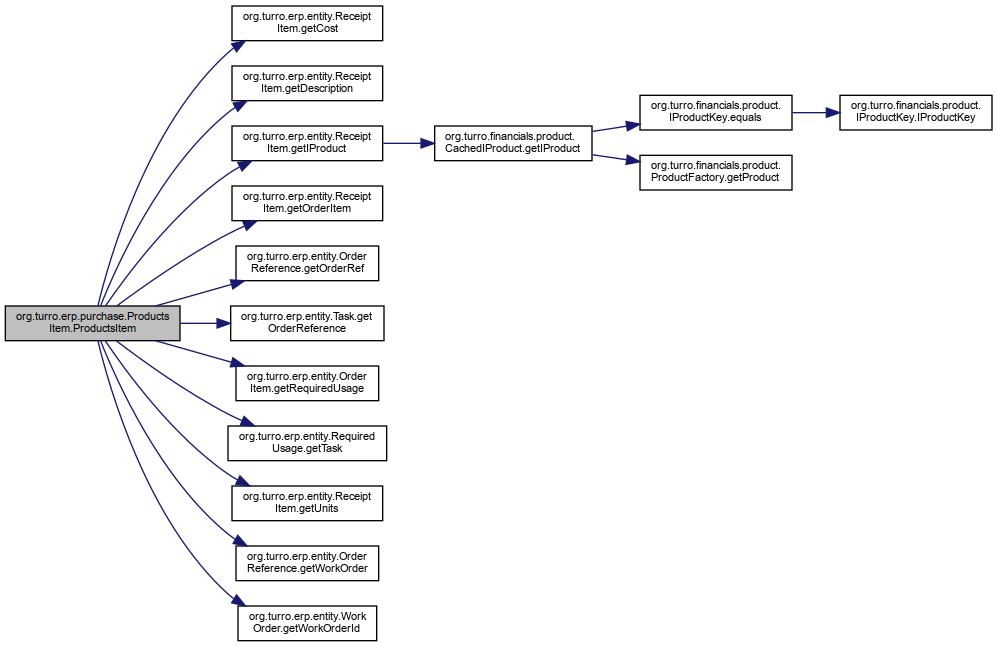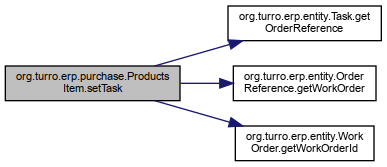◆ ProductsItem() [1/2]
| org.turro.erp.purchase.ProductsItem.ProductsItem |
( |
ReceiptItem |
ri | ) |
|
Definition at line 43 of file ProductsItem.java.
44 task = ri.getOrderItem().getRequiredUsage().getTask();
49 units = ri.getUnits();
50 description = ri.getDescription();
51 iProduct = ri.getIProduct();
OrderReference getOrderReference()
◆ ProductsItem() [2/2]
| org.turro.erp.purchase.ProductsItem.ProductsItem |
( |
| ) |
|
◆ getConcept()
| String org.turro.erp.purchase.ProductsItem.getConcept |
( |
| ) |
|
◆ getCost()
| double org.turro.erp.purchase.ProductsItem.getCost |
( |
| ) |
|
◆ getIProduct()
| IProduct org.turro.erp.purchase.ProductsItem.getIProduct |
( |
| ) |
|
◆ getOrderRef()
| int org.turro.erp.purchase.ProductsItem.getOrderRef |
( |
| ) |
|
◆ getOrderReference()
| OrderReference org.turro.erp.purchase.ProductsItem.getOrderReference |
( |
| ) |
|
◆ getTask()
| Task org.turro.erp.purchase.ProductsItem.getTask |
( |
| ) |
|
◆ getUnits()
| double org.turro.erp.purchase.ProductsItem.getUnits |
( |
| ) |
|
◆ getWorkOrder()
| WorkOrder org.turro.erp.purchase.ProductsItem.getWorkOrder |
( |
| ) |
|
◆ getWorkOrderId()
| long org.turro.erp.purchase.ProductsItem.getWorkOrderId |
( |
| ) |
|
◆ setConcept()
| void org.turro.erp.purchase.ProductsItem.setConcept |
( |
String |
concept | ) |
|
◆ setCost()
| void org.turro.erp.purchase.ProductsItem.setCost |
( |
double |
cost | ) |
|
◆ setIProduct()
| void org.turro.erp.purchase.ProductsItem.setIProduct |
( |
IProduct |
product | ) |
|
Definition at line 104 of file ProductsItem.java.
105 this.iProduct = product;
106 if(cost == 0 && product !=
null) {
107 cost = product.getProductCost();
◆ setOrderRef()
| void org.turro.erp.purchase.ProductsItem.setOrderRef |
( |
int |
orderRef | ) |
|
Definition at line 78 of file ProductsItem.java.
79 if(this.orderRef != orderRef) {
80 orderReference =
null;
83 if(or.getOrderRef() == orderRef) {
89 this.orderRef = orderRef;
Set< OrderReference > getOrderReferences()
◆ setOrderReference()
| void org.turro.erp.purchase.ProductsItem.setOrderReference |
( |
OrderReference |
orderReference | ) |
|
◆ setTask()
| void org.turro.erp.purchase.ProductsItem.setTask |
( |
Task |
task | ) |
|
◆ setUnits()
| void org.turro.erp.purchase.ProductsItem.setUnits |
( |
double |
units | ) |
|
◆ setWorkOrder()
| void org.turro.erp.purchase.ProductsItem.setWorkOrder |
( |
WorkOrder |
workOrder | ) |
|
◆ setWorkOrderId()
| void org.turro.erp.purchase.ProductsItem.setWorkOrderId |
( |
long |
workOrderId | ) |
|
Definition at line 143 of file ProductsItem.java.
144 if(this.workOrderId != workOrderId) {
147 orderReference =
null;
150 this.workOrderId = workOrderId;
static WorkOrder getByWorkOrderId(long value)
The documentation for this class was generated from the following file:






